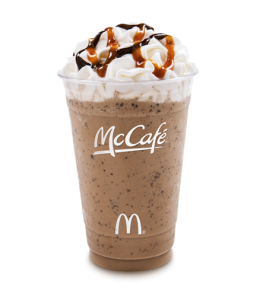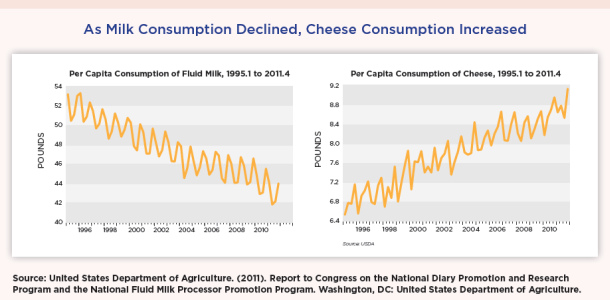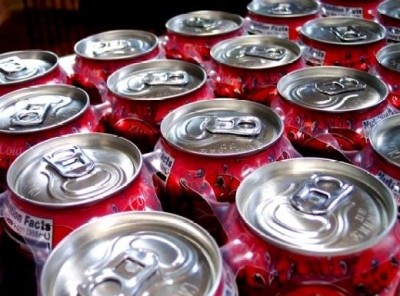‘Dairy junk foods’ under fire in report highlighting dramatic shift in dairy consumption patterns

In ‘Whitewashed: How Industry and Government Promote Dairy Junk Foods’ public health lawyer Michele Simon (Eat Drink Politics) says the issue is not "whether or not dairy is essential to the diet”, but whether it is right that ‘dairy junk foods’ such as pizza and sugary yogurts ‘get a pass’ while soda and burgers come under fire.
11% of all sugar goes into the production of dairy products
She adds: “The assumption that eating dairy is essential to the diet has obstructed our ability to criticize federal government support for unhealthy forms of dairy. Most of the processed cheeses, frozen desserts, and yogurt [that] industry promotes as health foods, nutritionally qualify as junk foods.”
The government, adds Simon, should not allow sugary and salty dairy foods to be approved as ‘Smart Snacks’ in schools; while dairy checkoff funding (the scheme collects a mandatory 15c on every hundredweight of milk sold or imported) should not be used to promote dairy foods that conflict with dietary guidelines.
She then goes on to document how dairy consumption patterns have shifted:
- Consumption of milk as a beverage has decreased nearly 50% since 1909.
- About half of all fluid milk is consumed as flavored milk, with cereal, or in a drink (the other half is consumed as plain milk).
- Nearly half of the US milk supply goes to make about 9bn pounds of cheese (the single largest source of saturated fat in the diet) and 1.5bn gallons of frozen desserts (two thirds of which is ice cream).
- 11% of all sugar goes into the production of dairy products.
Andy Bellatti: Dairy junk foods shouldn’t get a pass because they contain calcium

Asked whether it was feasible to turn back the clock and get more kids to drink plain milk, or whether sugar in yogurt or sodium in cheese is a small price to pay for getting kids to eat more dairy, registered dietitian Andy Bellatti told FoodNavigator-USA:
“Will children go back to drinking gallons of plain milk? Probably not. But that doesn't mean that sugary yogurts that resemble melted ice cream should be applauded as health foods.”
He added: “Defending junky, sugar and sodium-laden foods that should be treats at best under the guise of ‘well, they have calcium’ or whatnot plays right into industry's hands. This is like saying that Froot Loops and Lucky Charms should be spared of criticism because they are fortified with 23 vitamins and minerals.”
Dairy does not hold exclusive rights to any nutrient
Meanwhile, there are other sources of protein, calcium and other ‘nutrients of concern’ besides dairy that do not require consumers to make nutritional ‘trade-offs’, he said. “Most yogurts contain added sugar, whereas other foods that naturally offer calcium and potassium don’t.
“Dairy does not hold exclusive rights to any nutrient. Potassium is abundant in plant-based foods: the reason Americans are deficient in it isn’t because it is hard to come by, but because the American diet is so low in whole, plant-based foods.”
He added: “The American Heart Association recommends that children ages 4-8 should consume no more than 3 teaspoons of added sugar a day. Most 8oz servings of chocolate milk contain 2-4 teaspoons.”
Checkoff funds are directly used to promote junk foods
But what does the industry-financed checkoff program have to do with the government?
A lot, claims Simon. “The federal government administers, oversees, and approves almost every aspect of the dairy checkoff program. These funds are directly used to promote junk foods.”
And while checkoff money is only supposed to be used for ‘generic’ marketing activities (eg. ‘Got Milk’), says Simon, it has helped fund campaigns at McDonald’s, Pizza Hut, Taco Bell and Dominos and the promotion of sugary milks such as TruMoo (one serving of strawberry TruMoo has 23g sugar) in schools.
National Dairy Council: Milk is the #1 food source of nine essential nutrients
But Dr. Greg Miller, executive vice president of National Dairy Council, told FoodNavigator-USA that “even though the report took great effort to make it seem otherwise, these partnerships are paid for entirely by farmers.

“It is unfortunate Ms. Simon opted not to highlight how these partnerships have led to fat-free chocolate or low-fat white milk as the default beverage for McDonald’s Happy Meals or that low-fat yogurt with 25% less sugar is now available in Happy Meals.”
He added: “The ‘administration’ and ‘oversight’ that are repeatedly referred to is for the USDA to ensure the checkoff adheres to the rules that govern it – and further, farmers reimburse the agency for these oversight costs.”
Diets with better intakes of dairy have higher nutrient content
As for Simon’s concerns about nutrition, he said: “Why would someone put scare quotes around ‘success stories’ when talking about a school in North Dakota providing samples of Greek yogurt to students?
“That sounds like a development that most parents, teachers and school boards would applaud, as we all know it is not always easy to get kids to eat nutrient-rich foods.”
Meanwhile, he added, “Milk is the number one food source of nine essential nutrients – including protein, calcium, vitamin D and potassium – but only 7% of calories for those ages 2-18 years.”
While there are plant-based sources of calcium, protein and the other nutrients in milk, he added, “People like dairy, they can cook with it, they can add things to it to personalize it and make it their own.
“Research shows that diets with better intakes of dairy have higher nutrient content, which is associated with a number of health benefits. That’s because milk, as well as nutrient-rich cheese and yogurt, offers people the flexibility of building healthy diets that fit their health and wellness needs and preferences.”


















